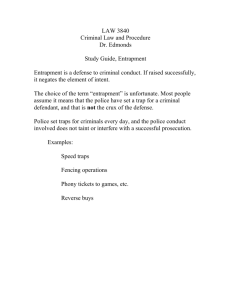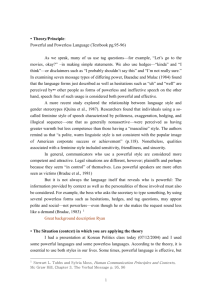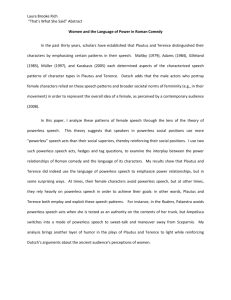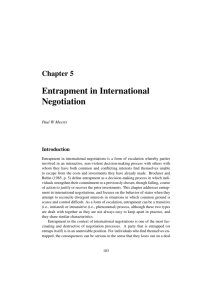Three I`d Monster paragraph development
advertisement
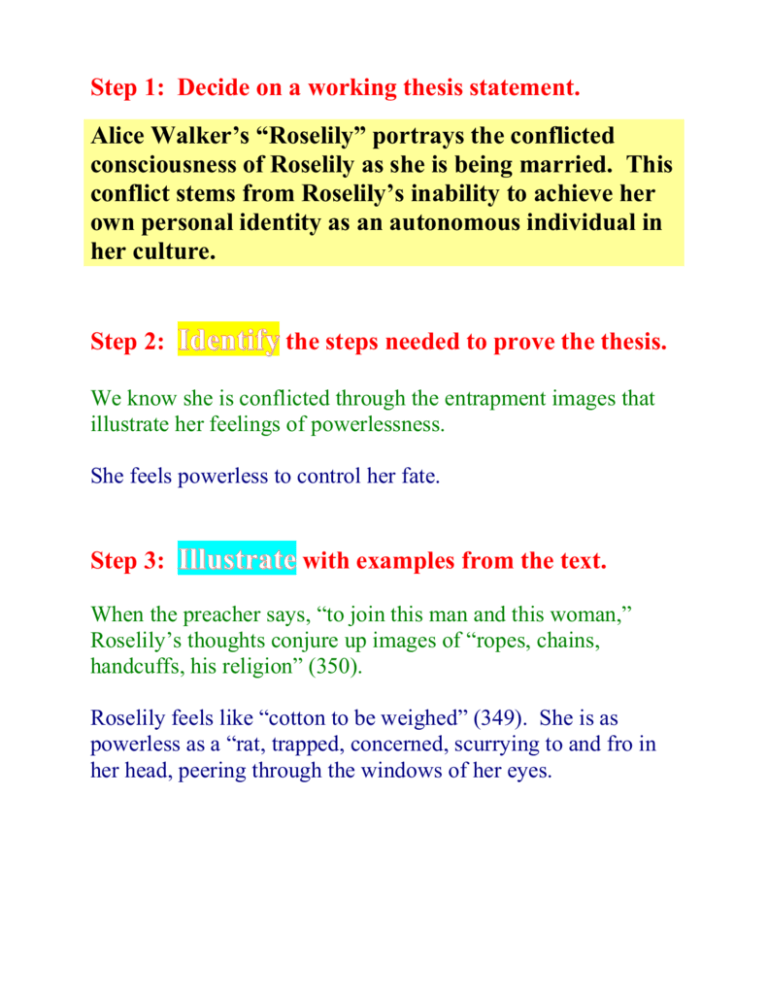
Step 1: Decide on a working thesis statement. Alice Walker’s “Roselily” portrays the conflicted consciousness of Roselily as she is being married. This conflict stems from Roselily’s inability to achieve her own personal identity as an autonomous individual in her culture. Step 2: Identify the steps needed to prove the thesis. We know she is conflicted through the entrapment images that illustrate her feelings of powerlessness. She feels powerless to control her fate. Step 3: Illustrate with examples from the text. When the preacher says, “to join this man and this woman,” Roselily’s thoughts conjure up images of “ropes, chains, handcuffs, his religion” (350). Roselily feels like “cotton to be weighed” (349). She is as powerless as a “rat, trapped, concerned, scurrying to and fro in her head, peering through the windows of her eyes. Step 4: Interpret the examples. Walker uses many symbols of entrapment interwoven with the vows of the marriage ceremony in order to reveal Roselily’s inner conflict regarding her marriage. Just after the preacher utters the words “to join this man and this woman,” Roselily’s consciousness conjures up images of “ropes, chains, handcuffs, his religion” (350). At its best, marriage is a joining of man and woman in order to facilitate a life of sharing and happiness. For Roselily, this joining emerges as a cumbersome existence akin to slavery. Roselily envisions her new husband’s religion as another form of entrapment, one which she does not understand and one which will require her to deny the religion that she has embraced her entire life. This paragraph can continue interweaving Illustrations with Interpretations. Remember that your illustrations must be in a progressive order with the last as the strongest example. If you should decide that this illustration is the strongest, simply insert layers of illustration and interpretation before it. Never simply throw in an illustration and expect your reader to interpret it—that is your job. In addition to these symbols of entrapment, Walker reveals Roselily’s powerlessness through the metaphors that Roselily invokes to express her own self-worth. Right away in the story, Roselily envisions herself as “cotton to be weighed” (349). Economically, cotton is important to Roselily’s culture. Rural Mississippi would depend upon the cotton crop for its survival. Similarly, the culture depends upon the women in the community to keep the family and the culture in working order. Yet, just as cotton has no control over who buys and sells it, Roselily feels powerless to control her destiny. She is simply merchandise to be bartered over. Roselily is as powerless as a “rat, trapped, concerned, scurrying to and fro in her head, peering through the windows of her eyes” (352). Her strength and identity are trapped inside herself. She can see the world as it is, but she feels that no one can see the real person that she strives to be. Through these images of cotton and a trapped rat, Roselily expresses her lack of autonomy in her culture. She does not have a voice, and no one cares enough to peer back through the window of her eyes to see her real self. Notice the transition leading from the first topic to the second. Illustrations and interpretations are layered here. If you wish to expound each example even further, the paragraph can be expanded into two full paragraphs, with each paragraph exploring one example.


